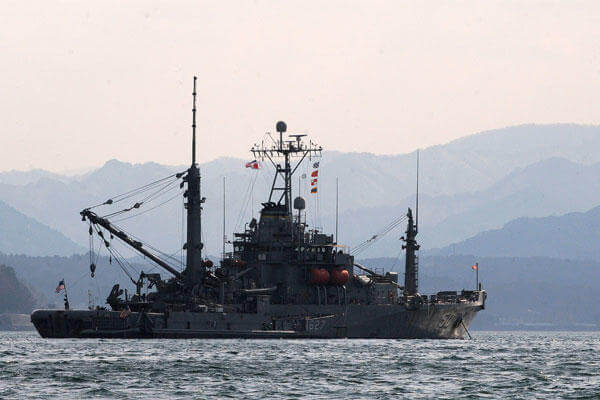SINGAPORE -- In a training evolution to be conducted as part of the Cooperation Afloat Readiness and Training (CARAT) 2014 exercise series, U.S. Navy divers, assisted by personnel from the Indonesian navy, will survey the World War II wreck of the cruiser USS Houston (CA 30) in June.
The purpose of the mission is to determine the vessel's current condition and provide real-world training to rescue and salvage divers in maneuvering around a sunken ship. Divers from both navies will also share best practices and diving techniques during a series of training evolutions on board the rescue and salvage ship USNS Safeguard (T-ARS-50).
Houston was sunk during the World War II Battle of Sunda Strait Feb. 28, 1942 with the loss of more than seven hundred souls. The ship remains sovereign property of the U.S. under customary international law, and is a popular dive site. Houston is located off the west coast of Java, Indonesia, one of nine partner nations participating in CARAT 2014.
Mobile Diving and Salvage Unit divers embarked in Safeguard will inspect the wreck to assess whether the ship has fallen prey to illicit salvage. They will be aided by Dr. Alexis Catsambis, an underwater archaeologist from the Naval History and Heritage Command (NHHC) who will provide operations planning support in order for the mission to effectively document the state of preservation of Houston. Documentation methods will include personal inspection by divers, as well as the planned use of sonar sensing systems and a remotely operated vehicle (ROV).
Once the mission is complete, Catsambis and NHHC's Underwater Archaeology Branch will compile the expedition's findings into a formal report on the condition of the ship which will be released when complete.
"Working with our Indonesian navy partners, CARAT 2014 offers an excellent opportunity to conduct this diving exchange as part of our shared training goals, while also allowing us to determine the condition of a ship that is an important part of the U.S. Navy's heritage in this region," said Rear Adm. Cindy Thebaud, commander, Task Force 73 and commander, Naval Forces CARAT.
The Department of the Navy's sunken ship and aircraft wrecks represent a collection of more than 17,000 fragile, non-renewable cultural resources distributed worldwide. They often serve as war graves, safeguard state secrets, carry environmental and safety hazards such as oil and ordnance, and hold great historical value. While it is not feasible to conduct similar surveys of all sunken military craft, Navy leadership desires to ensure the final resting place of those who made the ultimate sacrifice when the ship went down remains in a respected and solemn condition.
In its 20th year, CARAT, which continues through late 2014, is a bilateral exercise series designed to address shared maritime security priorities and concerns, strengthen navy-to-navy relationships and enhance interoperability among participating forces. It will focus on combined air, surface and anti-submarine operations at sea, maritime domain awareness, amphibious landing events and humanitarian assistance, disaster response scenarios. Additional skill areas exercised during CARAT include riverine operations, explosive ordnance disposal, combat construction, visit, board, search, and seizure, diving and salvage, search and rescue, military medicine and military law.
The Naval History and Heritage Command, located at the Washington Navy Yard, is responsible for the preservation, analysis, and dissemination of U.S. naval history and heritage. It provides the knowledge foundation for the Navy by maintaining historically relevant resources and products that reflect the Navy's unique and enduring contributions through the nation's history, and supports the Fleet by assisting with and delivering professional research, analysis, and interpretive services.
NHHC is composed of many activities including the Navy Department Library, the Navy Operational Archives, the Navy art and artifact collections, underwater archeology, Navy histories, nine museums, USS Constitution repair facility and the historic ship Nautilus.





























